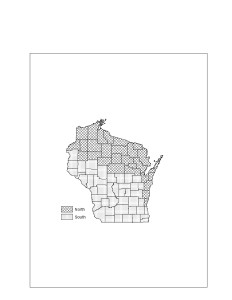
The review began in 2014 and although the high risk time periods during the spring did not change from the past oak wilt guide (North: April 15 – July 15; South: April 1 – July 15), the revised guidelines now include more examples of situations when you would not need to implement the cutting restrictions; these are listed as either Exceptions or Modifications. Exceptions are considered relatively common and are straightforward to apply, while Modifications are considered to be stand-specific. Both Exceptions and Modifications, if used, need to be documented in cutting notices, see chapter 1 of the guidelines for more information on documentation. The guidelines are still in 3 parts depending on your proximity to oak wilt (not in the county, in the county, or oak wilt is in your stand) and the Exceptions and Modifications are different for each situation so be sure to take some time to familiarize yourself with what is in the new oak harvesting guidelines.
If you would like more information, or if your group, organization, or team would be interested in additional training on implementing the guidelines, please contact a DNR Forest Health Specialist in your area. The advisory committee for this review was diverse, consisting of consulting, industrial, county, and DNR foresters, DNR forest health staff, Forest Service researchers, and representatives from Wisconsin Woodland Owners Association, Society of American Foresters, Great Lakes Timber Professionals Association, Wisconsin Paper Council, and Lake States Lumber Association. Thank you to Jeff Kante, who represented SAF on the advisory committee.
